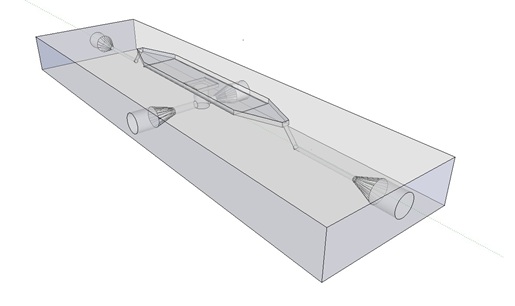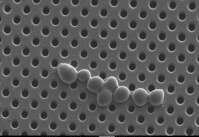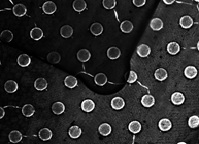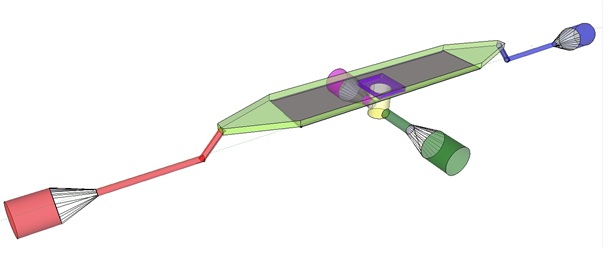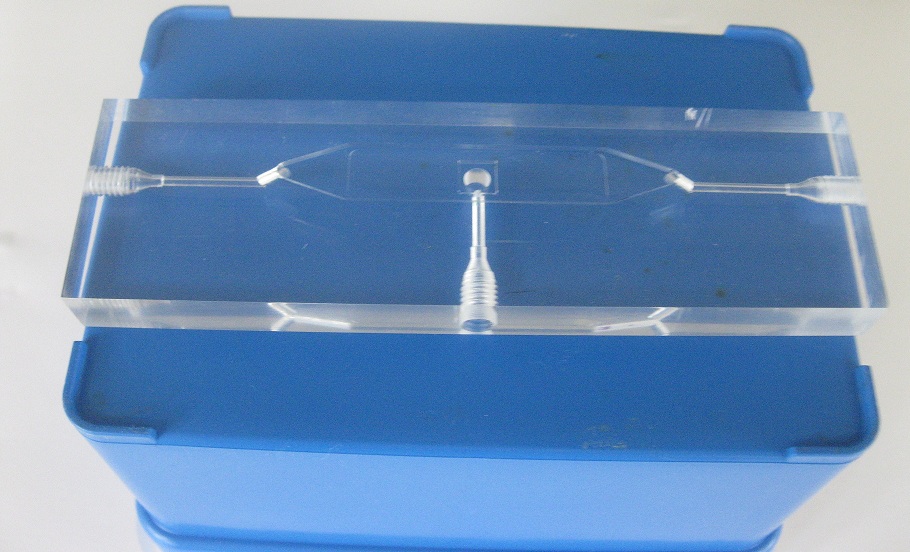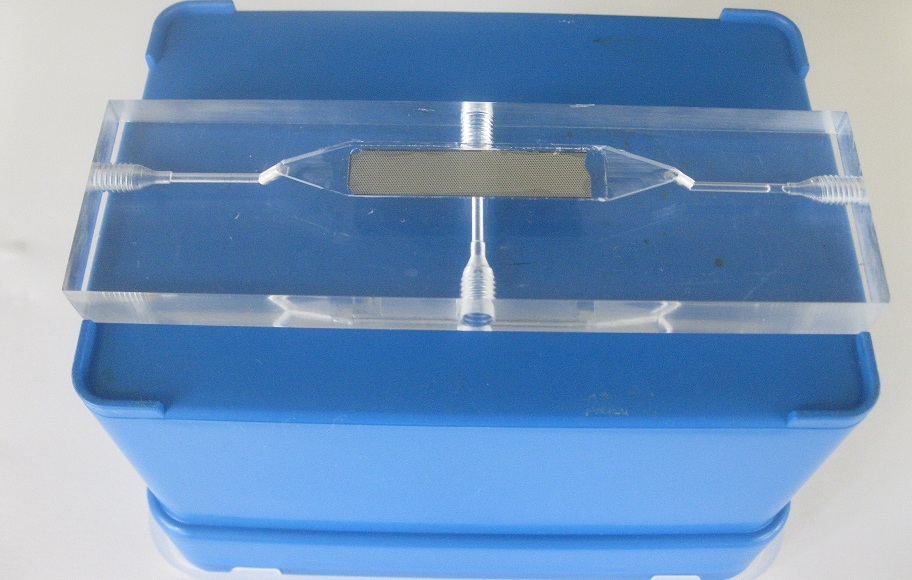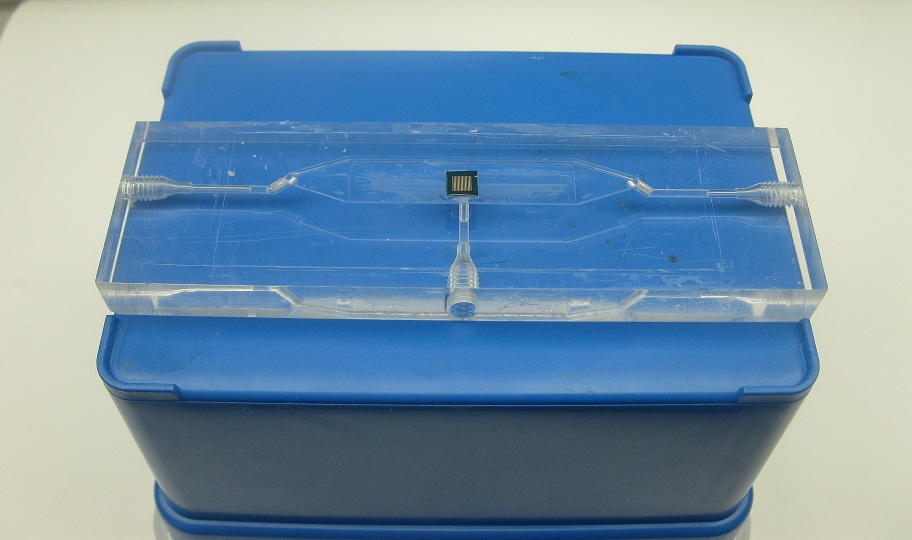Team:Wageningen UR/Project/Devices
From 2011.igem.org
(→Custom fluidic device designed by Team Wageningen UR to measure oscillations) |
Matthijnwur (Talk | contribs) (→Custom fluidic device designed by Team Wageningen UR to measure oscillations) |
||
| Line 53: | Line 53: | ||
'''Implementation of both bacterial platforms in the design of the flow device.''' | '''Implementation of both bacterial platforms in the design of the flow device.''' | ||
| - | The induction and observation of oscillatory behavior in a population of ''E. coli'' on the microsieve requires a cake of cells to be present on the membrane of the microsieve. In the dairy | + | The induction and observation of oscillatory behavior in a population of ''E. coli'' on the microsieve requires a cake of cells to be present on the membrane of the microsieve. In the dairy industry this is achieved by applying the filtrate through an inflow port leading to a chamber, which houses the microsieve. Because an overpressure is produced in the chamber, liquid will be forced through the sieve and the suspended particles – in our case ''E. coli'' cells – will aggregate on the sieve. To prevent that the pressure in the chamber becomes so high that cells get lysed by being pushed through the filter also an outflow port is included. In figure 4 the functional components of the flow device are depicted. |
| Line 60: | Line 60: | ||
'''Fig.4:''' Functional components of the flow device: In red the inflow port and channel to the top chamber of the flow device. In light green the flow chamber containing either in black the micro-dish or in purple the microsieve. In blue the outflow port of the top chamber. In yellow the bottom chamber with its respective in- and outflow channels and ports.'' | '''Fig.4:''' Functional components of the flow device: In red the inflow port and channel to the top chamber of the flow device. In light green the flow chamber containing either in black the micro-dish or in purple the microsieve. In blue the outflow port of the top chamber. In yellow the bottom chamber with its respective in- and outflow channels and ports.'' | ||
| - | To induce and observe oscillatory behavior in a population of ''E. coli'' in the microdish nutrients should be readily available for the cells located in the wells. To achieve this, the design implements a second set of inflow (in green) and outflow(in pink) ports. These ports connect to the lower chamber (yellow) and are used to flow a fresh supply of medium through the lower chamber. When the lower chamber is filled with medium, the medium can diffuse through the pores in the aluminum oxide hereby constantly giving the cells access to fresh medium. these ports connect to a chamber(yellow) when filled with medium comes in contact with the aluminum oxide microdish(in black). Through the addition of these ports an continuous supply of fresh medium is supplied. | + | To induce and observe oscillatory behavior in a population of ''E. coli'' in the microdish nutrients should be readily available for the cells located in the wells. To achieve this, the design - as depicted in figure 4 - implements a second set of inflow (in green) and outflow(in pink) ports. These ports connect to the lower chamber (yellow) and are used to flow a fresh supply of medium through the lower chamber. When the lower chamber is filled with medium, the medium can diffuse through the pores in the aluminum oxide hereby constantly giving the cells access to fresh medium. these ports connect to a chamber(yellow) when filled with medium comes in contact with the aluminum oxide microdish(in black). Through the addition of these ports an continuous supply of fresh medium is supplied. |
===General design considerations.=== | ===General design considerations.=== | ||
| Line 69: | Line 69: | ||
===The Result.=== | ===The Result.=== | ||
| + | In the following pictures our flow device is depicted. In figure 5, the device is seen without any of the bacterial growing platforms installed. In figure 6, the flow device is seen with a microdish installed in the appropiate socket, depicted in black in figure 4. In figure 7, the flow device is seen with | ||
| + | as depicted in black in figure 4. In figure 7, the flow device is seen with a microsieve installed in the appropiate socket (purple) | ||
| + | [[File:without2.jpg|770px]] | ||
| - | + | ||
| + | [[File:devicedish4.jpg|770px]] | ||
| + | |||
| + | [[File:devicesieve2.jpg|770px]] | ||
'''Fig.4''' ''Flow device (left) with microdish (middle) and microsieve (right)'' | '''Fig.4''' ''Flow device (left) with microdish (middle) and microsieve (right)'' | ||
Revision as of 12:50, 21 September 2011
 "
"



